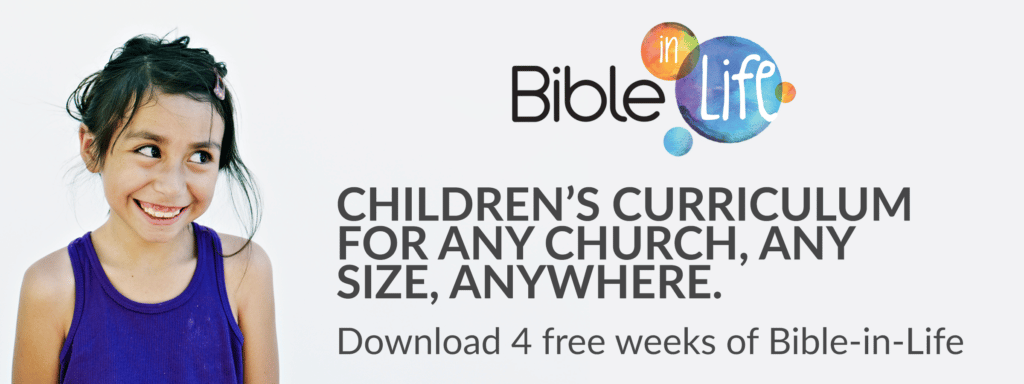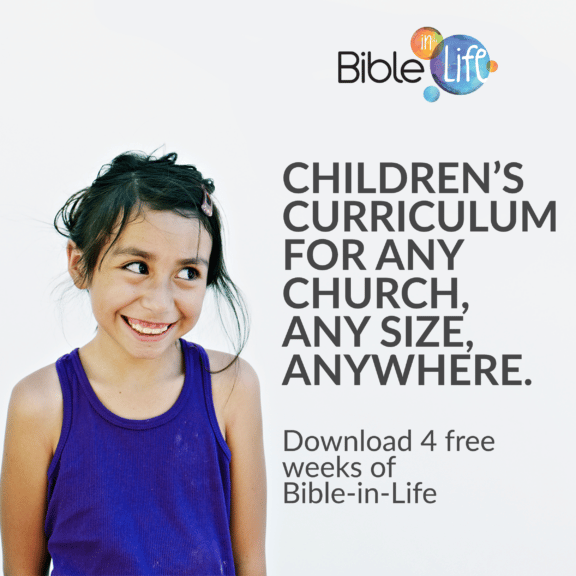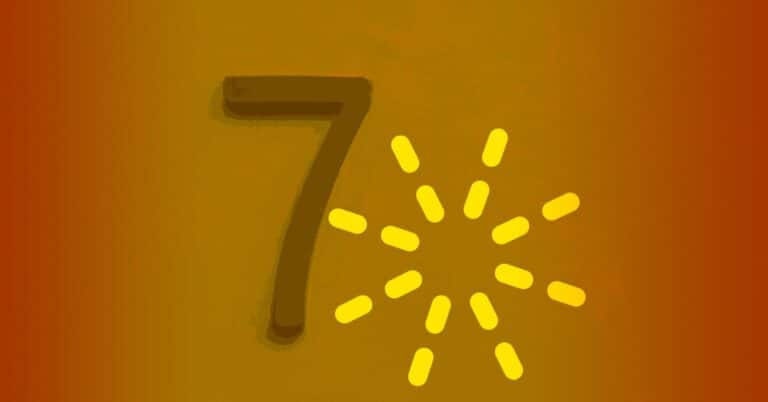Jesus willingly died on the cross to provide the means of salvation.
TEACHER PREPARATION
We have all felt the sinking realization that we have sinned again. Sooner or later we sense the desperation of our condition as sinners. Isaiah’s prophecy concurs with our conclusion when he writes in Isaiah 53:6: “We all, like sheep, have gone astray, each of us has turned to his own way.” But Isaiah doesn’t stop there. He concludes the verse, “And the Lord has laid on him the iniquity of us all.” The ultimate consequence of every sin, separation from God and death, has been undone forever because Jesus paid for it all.
Before the world began, God knew and secured everything we need. But even knowing this incredible truth, hope still falters in our daily lives. Our difficulties, disappointments and failures seem to fly in the face of our hope in God. At these times, it is essential to remember that “he who did not spare his own Son, but gave him up for us all—how will he not also, along with him, graciously give us all things?” (Romans 8:32). And though we may not understand what God is doing in our lives, we can know that He is working on our behalf with far more love and power than we can imagine! That’s the reason we can hope in Him—not in our own goodness—and His immeasurable ability to eventually work good out of every struggle we give into His care.
Preteens, too, struggle with personal sin and the sins of others. They have all experienced the sad outcome of sin against a parent, sibling or peer. This week as you prepare for your class, pray for each student by name. Thank God for the power of His Word to reveal Jesus and His great forgiveness and salvation to each student, through you and through the Bible passages you are presenting.
We have hope because Jesus took the punishment for our sins.
SMALL GROUP DISCOVERY
Option A: Substitution Tag
Supplies
- Masking tape
- Index cards
- Snack
Preparation
Use masking tape to create start and finish lines on either side of a large playing area. Place at least one card for each student in a stack at the finish line.
Procedure
1. Invite a volunteer to be “It.” “It” stands in the middle of the playing area. Other students stand behind the start line. Explain to students that once each person has an index card, they will be able to have a snack together. But there are some challenges! Unless students are holding an index card, they can be tagged by “It.” And each person may only pick up one card from the stack. If someone is tagged, he or she must remain frozen in place until being given an index card by another student. Any student who sacrifices his or her card freezes and takes the place of the person he or she freed.
2. At your signal, students begin walking to the finish line. As needed, remind students that someone who was given a card in order to become unfrozen may still pick up a card and give it to any frozen person.
3. After all students have a card, distribute snack and ask the questions below.
- Who made a sacrifice in this game? Why were you willing to sacrifice your index card? What did you hope to get out of it?
- What are some other times people might sacrifice something important in order for something good to happen? (Sacrifice free time to study for a test in order to get a good grade. Give up watching TV to go to baseball practice so that team will play well.)
- When are times you might give up something in order to help a friend?
4. Conclude the activity by saying,
- The story of the first Easter tells about the most important sacrifice in the world.
Option B: Krazy Kapers
Supplies
- Pens
- Lesson 2 Student Guide Pages
Procedure
1. Students form pairs. Give each pair a Student Guide and pens.
2. One student in each pair asks the other student to tell words to fill in the blanks on one of the stories on pages 1 and 4 of the Student Guide. Student writes the words on the blank lines without letting his or her partner know the story. Then student reads aloud the story with the new words. Students switch roles to complete the other story.
3. After several minutes, ask the questions below.
- Who had to sacrifice what in these stories?
- Which of these sacrifices has ever been made by you or someone you know?
- Which sacrifice, or thing to give up, would be the hardest? Why?
- When have you had to sacrifice, or give up, something? Was it hard or easy? What were the results of your sacrifice?
4. Conclude the activity by saying,
- “Sacrifice” is a word that is used in the Bible to describe what Jesus gave up for our benefit. Let’s find out what Jesus sacrificed and how that changed everything!
LARGE GROUP STUDY
Character Study Jesus, The Savior
Supplies
- Bibles
- A recording of Handel’s Messiah
- Sonic Edge #2 CD and player
- Extra Edge #2 DVD and player
- Philippians 2 Poster
- Lesson 2 Poster
- Lesson 2 Student Guide Pages
Lead students to read and discuss the Bible verses listed. Extend the discussion with the questions and comments provided, and refer to the posters as indicated.


Introduction
What are some words people think of when they think about Easter? An important word to think about at Eastertime is “sacrifice.” Let’s find out why.
Philippians 2:8-11
Philippians 2:8-11 describes God’s sacrifice that we celebrate at Easter. (Students read Philippians 2:8- 11 from Bibles or Philippians 2 Poster. Optional: Play “Every Tongue Confess” song from CD or DVD.)
- What words in this passage describe the sacrifice that was made? What did Jesus do? (Jesus humbled Himself and allowed Himself to die on the cross.)
What do you remember about Jesus’ entry into Jerusalem? What were people hoping Jesus would do? Was everyone glad to see Him? Why or why not? Most people in the crowd had been very happy to see Jesus. Many of them wanted Jesus to take over the country and be an earthly king. But Jesus’ enemies were more afraid of Jesus than ever! They wanted to stop Jesus before He gained too much power!
Mark 14:10-11
What did Jesus’ enemies plan to do? Read Mark 14:10-11 to find out the plan. How did the plan work out? It was bad enough that Jesus was arrested, but what made His trial worse was the illegal way in which it was held and the false things that were said about Jesus. According to the law in those days, the trial should not even have been held at night.
Mark 14:55-59
Read Mark 14:55-59 to find out what lies were said about Jesus at this illegal trial. Jesus’ enemies thought He was saying He would destroy the Temple—their place of worship. But Jesus was really talking about Himself and the fact that He would let people destroy His body.
The law said that two or three people had to testify against someone in order to convict that person of a crime. But at first, none of the witnesses against Jesus could agree. Finally, though, two witnesses did come up with the same lie about Jesus. (See Matthew 26:60-61.)
Now the high priest and other religious leaders were ready to accuse Jesus. “You are under oath,” they said to Jesus, “so answer us truthfully; are You the Christ, the Messiah, the Son of God?”
Jesus looked at them calmly. “Yes, I am who you say I am.”
“He has spoken evil against God!” shouted Jesus’ enemies triumphantly! “He deserves to die!” Then they spit at Jesus and hit Him and made fun of Him. Why do you think Jesus didn’t try to stop them?
Mark 15:2-5
Roman law said these leaders couldn’t actually kill anyone themselves. So after dawn, they took Jesus to Pilate, the Roman governor. What did Pilate ask Jesus? Read Mark 15:2-4. How did Jesus answer? Read Mark 15:5.
Pilate was very puzzled by this quiet man before him. Obviously, these people were lying about Him, yet Jesus did nothing to defend Himself. He just stood quietly, calmly waiting.
“This man is innocent!” said Pilate. Pilate wanted to get out of killing Jesus. At this time of year, Pilate usually set free one prisoner. Perhaps Pilate hoped the crowd would agree to set Jesus free. He knew that the leaders had arrested Jesus out of jealousy.
Mark 15:11
Read Mark 15:11 to find out why Pilate’s plan didn’t work. The crowd demanded that Pilate set free a murderer named Barabbas. The crowd wanted Jesus to die! Pilate could have a riot on his hands if he didn’t do what they wanted. Pilate’s job was to keep peace in Jerusalem. He could not risk a riot. Pilate did what the people wanted him to do, even though he didn’t believe Jesus deserved to die.
Jesus was sentenced to die on a hill just outside of Jerusalem. The soldiers nailed Jesus’ hands and feet to a cross and set the cross upright. Hanging in that position would cause Jesus to gradually suffocate to death. Most of Jesus’ friends left Him to face this horrible death alone.
Voices from the crowd jeered at Jesus. “He was able to save other people, but He can’t even save Himself!” “Come off that cross if You are the Son of God.”
Jesus said, “Father, forgive them, because they don’t really know what they are doing.” Jesus was suffering and dying, yet He asked for forgiveness for the people who were hurting Him.
Isaiah 53:5-6
Many hundreds of years before, the prophet Isaiah poetically described this very day. Read Isaiah 53:5. How did Isaiah describe the way people would treat Jesus? Read Isaiah 53:6 to find why Jesus died on the cross. Jesus took the punishment for our sins—our transgressions, our iniquities—so that they wouldn’t keep us from being part of God’s family.
Jesus was the sacrifice for our sins. Many years before, during Old Testament times, God told His people that they would have to offer the sacrifice of a perfect lamb in order to receive forgiveness for their sins. Now Jesus was being killed as the perfect sacrifice for all time (see Hebrews 10:10). Why was Jesus the perfect sacrifice? Because Jesus is God’s Son and had never sinned, He was the only One who could take the punishment for all the people in the world.
After Jesus died, His friends placed His body in a tomb. This would be a very, very sad story if it ended this way. But Jesus didn’t stay dead. He came back to life! He rose from the dead! Jesus showed He was truly God’s Son and much more powerful than death and the people who had wanted Him to die.
Skit Option
Supplies
- Lesson Skit Pages
Let’s read a skit about how some people responded to the good news that Jesus is alive. Distribute Lesson Skit pages . Volunteers choose parts for the skit and read skit aloud. Why do you think Caiaphas chose not to believe in Jesus?
Conclusion
(Show Lesson 2 Poster.) Even though we feel sad that Jesus suffered, we are grateful that He chose to die on the cross. What does the Lesson 2 Poster show resulted from what happened on the Cross? Jesus loved us so much that He took the punishment for our sins so that nothing could ever keep us from God. Because of the Cross, we have hope!
The hope that Jesus gives is guaranteed to members of God’s family. (Invite interested students to talk individually with you about salvation. See “Leading a Student to Christ” on p. 105. Pray, thanking God for the hope we have in Jesus.)
SMALL GROUP APPLICATION
Talk with students about putting into practice the Bible truths discovered in this lesson. Use these discussion questions as you lead students to complete one of the activities on the following pages. Conclude the activity with the Life Application Challenge below.
- How does Philippians 2:8-11 describe Jesus and His actions? (He was humble and obedient, even to the point of dying on the cross.)
- Why might some people today not accept Jesus as their Savior? (They might not trust God’s love for them. They might not believe that Jesus really is alive. People might be angry with God because of bad things that have happened. They may not feel worthy of God’s love.)
- What does it mean to say that Jesus is the Savior? (He died on the cross to save us from the punishment for our sins. Because of Jesus’ death and resurrection, we can be forgiven and live as part of His family now and forever.)
- What are some Easter traditions that help people think about the fact that Jesus is our Savior?
- If you were to make up a tradition that would help you celebrate what Easter really means, what would it be?
- What are some ways we can praise Jesus for being our Savior?
Discussion Option: A New Song
Supplies
- Bibles
- Lesson 2 Comics
Procedure
1. Distribute comics. In the allegory, “The Chronicles of the Prince, Part 2,” the prince was killed, but the bard (a poet singer and storyteller) sang a song full of hope for the people who loved the prince. Students read the bard’s song in the last frame of the comic on page. Ask the questions below.
- What do you think “the prince will live and in his life, life to us give” means in the bard’s song?
- How might this song explain what Jesus did for us?
- What are some other ways you could explain to someone who didn’t know about Jesus why Jesus died on the Cross and then came back to life again?
2. Ask the discussion questions to extend the conversation about Jesus’ sacrificial death and about praising Jesus as our Savior.
Active Option: Treasure Hunt
Supplies
- Bibles
- Post-it Notes in two different colors
- Pencils
Procedure
1. Group students into two teams. Teams work together to write questions and answers about today’s lesson and/or Philippians 2:8- 11. Use the discussion questions as you talk with students about how Jesus’ sacrificial death provides the means for us to become members of God’s family. Using a different color of Post-it Note for each team, team members write questions and answers on separate Post-it Notes.
2. Teams take turns hiding questions and answers in the classroom, placing Post-it Notes under the tables and chairs, etc. Then each team hunts for the other team’s questions and answers, matching the questions with the right answers. Students discuss questions and answers as time permits.
Service Option: Help for the Young
Supplies
- Bibles
- Supplies for the service project you choose (see below)
Procedure
1. Today we will help some younger kids celebrate Easter and learn about Jesus’ love for them. Ask the questions below and the discussion questions.
- How did Jesus show love to us?
- What could you write to tell a younger child about Jesus that he or she would understand? (“Jesus is alive!” “Jesus loves you!”)
2. Lead students to complete the service project you chose.
Service Projects
Easter Cards: Each student uses construction paper and markers to make one or more Easter cards for younger children, printing short sentences about Jesus. Students sign their names on the cards and place stickers in envelopes with the cards. Children give cards to a class of younger children or distribute to children as they leave church with their parents.
Easter Egg Hunt: If possible in your church setting, arrange with the teacher of a younger class to host an Easter egg hunt. Find out how many children are in the class, planning for visitors also. Students write simple messages about Jesus on small slips of paper. Students fill plastic Easter eggs with slips of paper, stickers and small wrapped snack items. Then students hide Easter eggs and invite the younger class to find them. Make sure that there are the same number of eggs for each child. Before the hunt begins, tell the younger children how many eggs each one may find and keep.
Click here for more lessons like this one!







